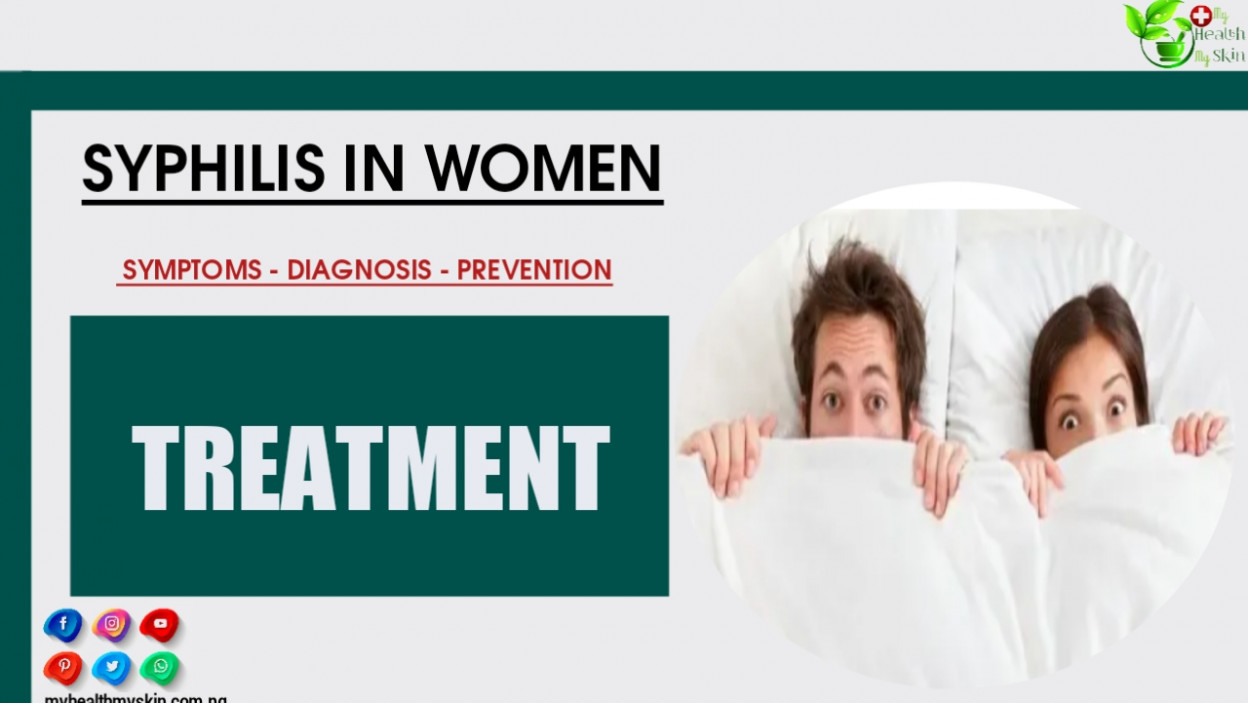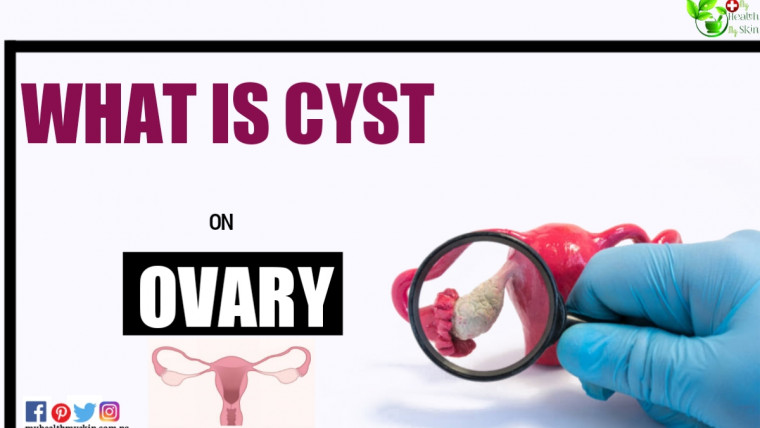Syphilis is the most severe venereal disease, lasting for many years and characterized by damage to all human organs. Scientists believe that syphilis occurred at the same time as humans.
The first mass illness in Europe occurred in 1493, shortly after Columbus returned from America.
Initially, syphilis was called a “sexually transmitted plague” in France. The modern name of the disease is derived from a shepherd named Syphilus.
According to the legend, the gods punished him for making his genitals sick due to his light morals. In 1530, an Italian physician named Fracastoro even wrote a poem about it.
Keep on reading to get more information about the following topics related to Syphilis. Causes, syphilis in women symptoms: all you need to know, diagnosis, prevention and treatment.
[lwptoc]
The Cause Of Syphilis
The causative agent of syphilis – pale treponema was first discovered in 1905. It is called “pale” because it is poorly stained with aniline dyes, which are widely used in microscopy.
Pale treponema is in the form of a thin thread twisted like a spiral, the size is not large – 14 microns. Due to its special structure, treponema moves quickly and easily enters various human organs.
The causative agent of syphilis can live in humid conditions for several hours, but when it dries, it is immediately destroyed by high temperatures and disinfectants. It can retain its viability for several days when frozen.
How Syphilis Is Transmitted
Syphilis refers to sexually transmitted infections, i.e transmission from a sick person during sexual intercourse. Infection can occur in different variants of sexual contact: oral-genital, anogenital, traditional.
If a sick person has small syphilitic ulcers in the mouth, he can spread the infection through the household.
That is, if a healthy person uses objects that are contaminated by kissing, biting, or in his mouth or saliva – mouthpieces, dishes, toothbrushes, toothbrushes, cigarettes, lipstick, etc. – can pass.
The disease is most common in patients with the first and second stages of syphilis. In the third period, the concentration of pale treponemes in the patient’s secretions decreases sharply.
There are two other ways that syphilis can be transmitted: when a sick person’s blood is transfused and when it is passed from mother to child during pregnancy.
Syphilis during pregnancy causes premature birth, stillbirth in 5-6 months, or birth of a child with syphilis.
The pathogen, which falls on the skin and mucous membranes of a healthy person from a sick person, enters the body through micro-lesions on their surface.
At this time, complex immunological processes occur. However, after recovery, immunity does not remain constant, so you can be infected with syphilis several times.
Syphilis Clinic
The Latent Stage Of Syphilis
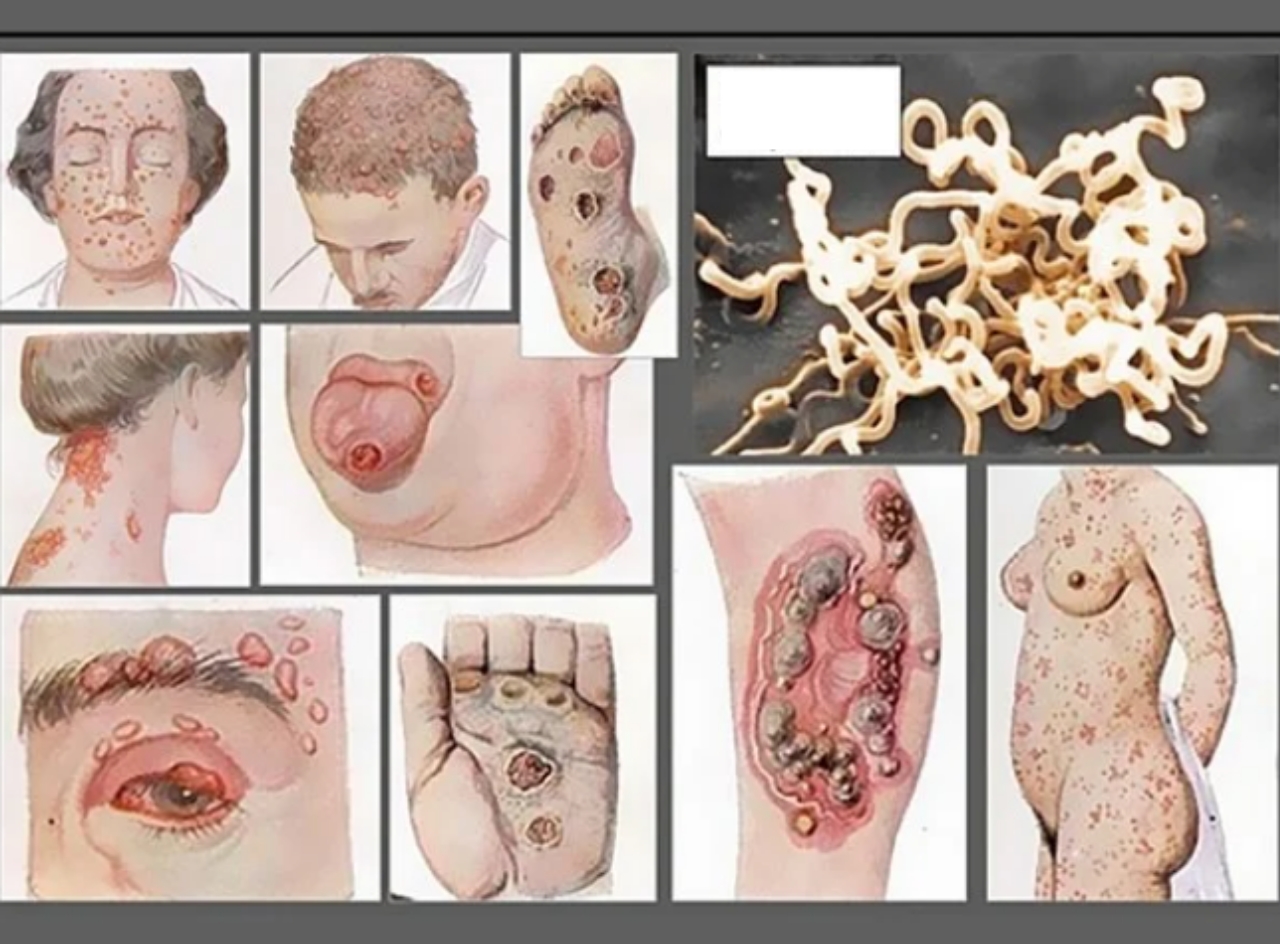
The disease goes through a series of stages in its development. After infection, the patient feels completely healthy.
However, this period lasts 4-5 weeks. This is called the incubation period. During this period, germs multiply in the body.
In some cases – asymptomatic in people weakened by alcoholism, drug addiction, tuberculosis, AIDS, oncological diseases, this period can be shortened to 2 weeks.
If the patient has taken antibacterial drugs for the treatment of other diseases (gonorrhea, chlamydia, etc.) during the incubation period, then the first symptoms of syphilis in women may appear several months after infection.
During all this time, the pathogen multiplies in the body, but the patient is not aware of it.
Symptoms of syphilis appear in waves, with episodes of exacerbation alternating with a latent course. Each phase of exacerbation is more severe, causing more damage to the body.
Syphilis In Women Symptoms
The symptoms of syphilis in women vary according to the stages. There are primary, secondary and tertiary types or periods of syphilis.
The initial symptoms of the disease occur where the causative agent enters the body.
Here the edges are hard, painless ulcer – a solid chancre is formed. It usually occurs in the genital area – on the skin or mucous membranes.
One week after the formation of the chancre, first the groin and then another group of lymph nodes grow. The duration of this period is one and a half months.
Within a month of the onset of the first symptoms, standard serological tests are still negative, i.e they do not confirm the diagnosis, although the person can already infect others. It should be noted that the treatment of syphilis is more effective during this period.
At the end of the first period, weakness, worsening of mood, pain in the extremities, headache may occur.
Then begins the second period, which lasts up to 3-4 years. He had skin rashes – syphilis. All patients have syphilitic spots (roseola).
At the same time, nodules (papules) containing large amounts of treponema germs are formed at the site of injury.
About half a year after the onset of the disease, colorless lesions appear on the upper body and skin of the neck – syphilitic leukoderma or “Venus necklace”. At the same time, hair loss was the main character.
If secondary syphilis is not treated – it goes into a latent stage, i.e the symptoms of syphilis disappear, but the diagnostic tests remain positive.
Later, relapses of secondary syphilis occur, which manifest themselves with a weak rash, leukoderma and mood swings. Recurrence, i.e, recurrence can be 2-4 times. Gradually, bones, joints, muscles, eyes, ears, and nervous system are damaged.
If left untreated, the third period begins after 3-4 years. It is accompanied by the formation of bumps on the skin, which are prone to injury.
Such bulges occur both in the internal organs and in the bones. When they break down, there can be serious complications that can result in the death of the patient.
The consequences of syphilis are damage to the aorta (syphilitic aortitis) and nasopharynx. 8-10 years after entering the body, pale treponema paralysis, which destroys the nervous system, gives rise to “dryness of the spine”.
Congenital Syphilis
This disease occurs in children born to sick women.
If a woman is infected with syphilis up to 5-6 months of pregnancy – the fetus dies in the womb. No, if the infection occurs later – 1-2 months after the birth of the child, the symptoms of the disease appear, and after 1 month the tests are positive.
In breastfed infants, syphilis manifests itself with anxiety, breastfeeding, stunted growth, and skin damage.
They had a syphilitic sneeze – a mucous, purulent, bloody or scaly discharge from the nose. Damage to the bone system, liver, spleen, lungs and other organs.
The main symptom of the disease in early childhood – condyloma of the back. Also, the child does not grow hair, the nervous system is damaged, stunted.
Delayed variant of congenital syphilis is a recurrence of untreated disease in early childhood. Its obvious symptoms are specific changes in the teeth, inflammation of the cornea and deafness.
Diagnosis Of Syphilis
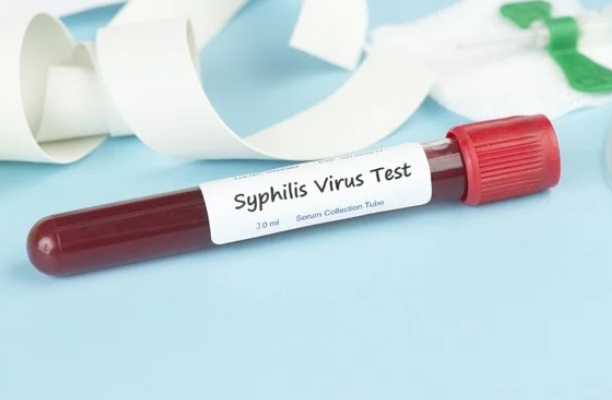
Laboratory diagnosis of syphilis is carried out by two types of tests: direct and indirect.
Treponema itself or chromosomes are detected in biological fluids and tissues by direct methods.
With the help of indirect methods, antibodies against the causative agents of syphilis can be detected in blood plasma and cerebrospinal fluid. They occur in response to the entry of treponema into the body.
The correct diagnosis can be made more accurately. These include the following tests:
- detection of the pathogen under a microscope on a dark background or by immunofluorescence staining;
- The PCR test detects DNA or RNA in tissues and fluids.
How to determine if a patient is sick by examining his blood serum? Indirect methods are used for this purpose. They also have 2 types: non-treponema and treponema.
Non-treponema Tests
The principle is that antibodies in the patient’s blood interact with cardiolipin antigens, which are similar to those of treponema.
This syphilis test allows the detection of antibodies to the first element, for example, 2 weeks after the formation of solid chancre.
Such reactions do not affect the disease in everyone, but only in 7-9 out of 10 people. In the late stages, the sensitivity of the test decreases, and the disease is detected in only 30% of patients.
The disadvantage of non-treponema tests is that there are many false-positive reactions. The advantages are cheap reagents, simplicity and quick results.
Non-treponema tests are used during mass examinations of the population and also to assess the activity of the disease and the effectiveness of treatment.
In the last two cases, the titer, ie the concentration, of the antibodies is considered. These reactions include:
- microprecipitation reaction or its analogues (for example, Wasserman reaction – RW);
- express tests for plasma reagents (RPR);
- reagent screening tests (RST);
- USR test and others.
Treponema Tests
These tests use only treponema antigens. Their sensitivity is higher than non-treponema tests – in 70-100% of cases the disease can be correctly diagnosed. At the same time, the specificity is high, that is, there are few false-positive results.
This is due to the maximum compatibility of the antibody in the patient’s blood with the antigen used.
Treponema tests are commonly used in suspicious and controversial cases, as well as to examine certain groups of patients (pregnant women, people with AIDS, and others).
Treponema tests are not used to check a patient’s recovery because antibodies remain in the blood for a long time.
These reactions are positive not only in syphilis, but also in diseases caused by microorganisms close to it.
In addition, they are false-positive in those with autoimmune pathology (Hashimoto’s thyroiditis and others), some oncological and endocrine diseases.
There are the following types of treponema tests:
- Enzyme-linked immunosorbent assay (ELISA) – a highly accurate diagnostic method;
- immunoblotting – a type of IFA, more precisely, has almost 100% sensitivity and specificity;
- Immunohemiluminescence (IHL) – a method of accurately assessing the amount of antibodies in the patient’s blood;
- Immunochromatography (ICC) – simple and quick tests.
False-positive Reactions To Syphilis
Sometimes laboratory tests in people who do not have syphilis show antibodies to treponema in the blood. In such cases, the term false-positive reaction is used.
There are two main reasons for this situation: either the analysis is not carried out correctly, or the individual characteristics of the organism.
False-positive reactions are conventionally divided into acute and chronic.
Acute reactions can be observed in the following cases:
- pregnancy;
- menstrual bleeding;
- after all newly injected vaccines;
- acute myocardial infarction;
- infectious diseases: influenza, respiratory infections, chickenpox, hepatitis, AIDS;
- dermatoses (eczema, neurodermatitis and others).
Chronic reactions can be noted in the following cases:
- autoimmune diseases (autoimmune thyroiditis, type I diabetes);
- systemic diseases of connective tissue (dermatomyositis, rubella);
- malignant derivatives;
- diseases of the liver and gallbladder (gallstone disease, cholestatic hepatitis, primary biliary cirrhosis);
- cardiovascular, endocrine, blood, lung diseases;
- drug addiction;
- old age;
- endemic treponematoses prevalent in southern countries.
Rarely in secondary syphilis – in AIDS, laboratory errors, etc. may be a false-negative reaction.
Now that you are well-versed on syphilis in women symptoms diagnosis, let’s begin learning about the treatment and prevention.
Treatment Of Syphilis
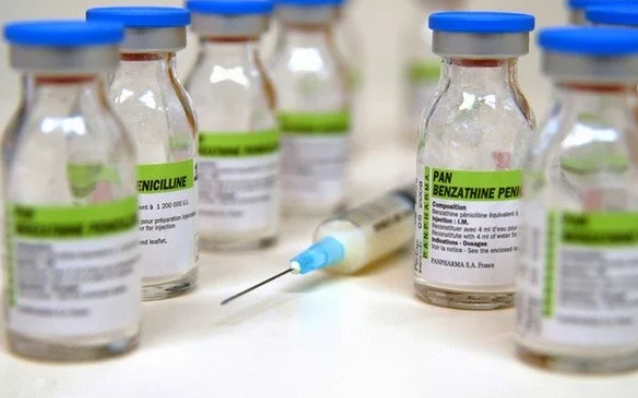
“How is syphilis treated?” The answer to the question depends on its objectives:
- specific treatment is prescribed to patients to get rid of the culprit;
- preventive treatment is prescribed to the patient’s sexual partner, if less than 2 months have passed since intercourse;
- prophylactic treatment is prescribed to sick pregnant women, and in case of non-compliance with the advice – to newborns;
- Trial treatment is used when syphilis is suspected, but not laboratory confirmed.
Syphilis is usually treated in an outpatient setting. People with tertiary syphilis, pregnant women and children, people with complications, as well as people with allergies to antibiotics are hospitalized in the venereological hospital.
Preparations
The main drugs against syphilis are long-acting forms of penicillin – Bisiliin-1, Bicillin-5 and others. Also, semi-synthetic penicillins (Ampicillin, Oxacillin), macrolides (Erythromycin), tetracyclines (Doxycycline), cephalosporins (Ceftriaxone) are effective.
In neurosyphilis, prednisone tablets are prescribed, and in case of damage to the heart and other organs – appropriate drugs.
Is syphilis treated? Of course, in modern times, syphilis is a treatable disease. In the early stages, just a few penicillin injections are enough to kill the causative agent. A few penicillin injections are enough for the preventive treatment of sexual partners.
Undesirable Effects
Complications sometimes develop after treatment with antibiotics. They are associated with the mass death of microbes and the release of their breakdown products into the blood. In addition, penicillin drugs themselves have short-term toxic effects on the body.
In one-third of patients with primary syphilis, an exacerbation occurs immediately after antibiotic injection. It intensifies within a few hours, but passes at the end of the day. Patients complain of chills and fever, headache, weakness, sweating.
They have rapid heartbeat, shortness of breath, and low blood pressure. In secondary syphilis, the skin rash becomes brighter, the elements combine, and new ones form in undamaged areas of the skin.
Such a reaction usually does not harm the body and does not require special treatment.
However, it should be tried not to occur in pregnant women, children, people with pathologies of the heart, eyes and nervous system. Prednisone is prescribed to reduce the likelihood of exacerbation.
After injection of long-acting forms of penicillin, some patients develop Hayne syndrome. It is accompanied by dizziness, pale skin, impaired vision, temporary mental disorders and high blood pressure.
The latter symptom allows to distinguish Hayne syndrome from vascular collapse (sudden drop in blood pressure). Such an approach does not take more than 30 minutes.
Nikolau syndrome is a rare complication that occurs when children receive penicillin intravenously. It is accompanied by the formation of painful spots on the skin, which later turn into blisters. Sometimes paralysis of the extremities occurs.
Other side effects may occur when using penicillins:
- convulsions (mostly in children);
- increased edema in patients with chronic heart failure;
- allergic reactions, which occur in one in 10 patients;
- Anaphylactic shock – accompanied by a sudden drop in blood pressure, weakening of heart rate, loss of consciousness, suffocation.
Treatment Of Children And Pregnant Women

Abortion in syphilis is not necessary, because timely treatment of the expectant mother provides a basis for a healthy birth. The decision to maintain or terminate a pregnancy should be made only by the child’s parents.
Timely treatment is considered to be started before the 32nd week of pregnancy. However, it can be done later. Long-term types of penicillin are prescribed. Prophylactic treatment is also carried out shortly after a specific course of therapy. Penicillin is not contraindicated during pregnancy.
If a woman is well treated, her birth is accepted in a normal maternity hospital, and the child is considered healthy and does not need any additional treatment.
Early and late and also acquired syphilis in children are treated with penicillin. The dose is chosen carefully so as not to cause serious complications or allergic reactions.
If the expectant mother with syphilis did not receive good treatment during pregnancy, the newborn is prescribed preventive treatment, even if there are no symptoms.
You May Also Like:
- Symptoms Of Torn Internal Stitches From Tummy Tuck (Abdominoplasty): What To Do And How To Treat!
- Candidiasis Albicans: Treatment, Prevention & Symptoms – 13 Most Used Remedies
- Genital Herpes: Common Symptoms, Treatment And Prevention
- Genital Herpes: Common Symptoms, Treatment And Prevention
- Why Is Itchy Skin In Pregnancy? Early Symptoms and Preventions
Criteria For The Effectiveness Of Treatment
In the case of primary or secondary syphilis, non-treponema tests, such as a microprecipitation test, should be negative within one year of treatment. If positive, the amount of antibodies should be reduced by at least 4 times.
RIF and IFA tests can remain positive for many years. This does not mean that the treatment has failed.
If symptoms persist or serological reactions (RMP) are positive, treatment is ineffective. In this case, the course of antibiotics should be repeated after additional examination methods.
Treatment Of Contact Persons
Such people are prescribed prophylactic treatment with antibiotics if they have not had sexual or very intense domestic contact for more than 2 months.
If 2 to 4 months have passed since the contact, they are satisfied with a double diagnostic test, if more than 4 months have passed, the analysis is performed only once.
Disease Prevention
Prevention of syphilis is based on three principles.
- Sanitary education.
- Population screening.
- Timely treatment of patients and contacts.
The following measures are taken to prevent congenital syphilis:
- The woman should be registered for pregnancy as early as possible;
- Triple screening of pregnant women for syphilis;
- When the disease is detected – timely and quality treatment;
- If necessary – prophylactic treatment of newborns.
The basis of personal safety of each person is the proper observance of intimate and household hygiene:
- Refusing casual sex;
- Use of a condom in connection with a new partner;
- In case of unprotected sex – the use of special means (Miramistin and others).
If you want to read more articles similar to Syphilis In Women Symptoms, Diagnosis, Prevention And Treatment? We recommend you visit our Women’s Health category. Share on your social networks and stay tuned for upcoming articles.
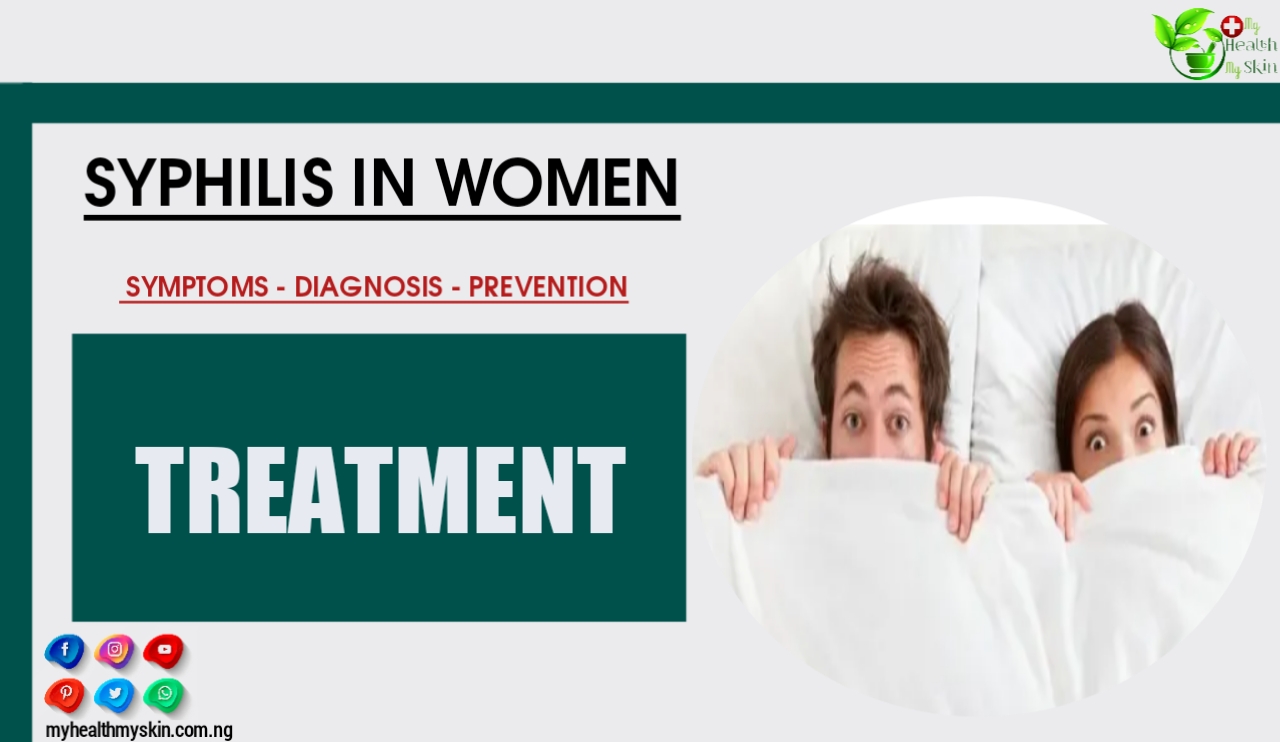
Have You Ever Heard That Syphilis Is Curable? Do You Know Someone Who Has Contracted This Std? Comment Below!

